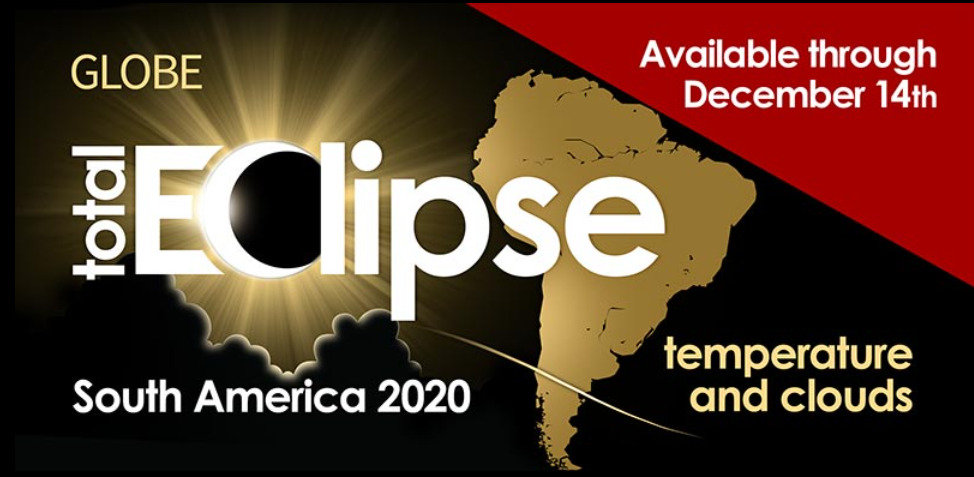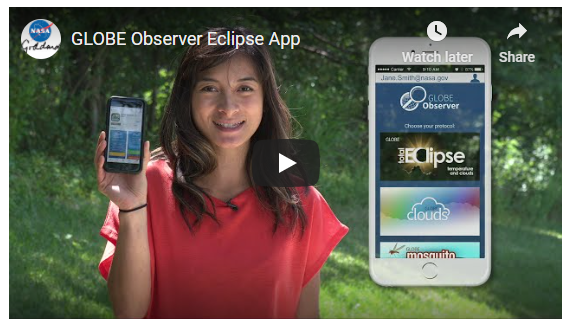News - Elizabeth City State University Partnership
Total Solar Eclipse in South America on 14 December 2020: Get Ready to Take Temperature and Clouds Measurements

In case you haven’t heard, there will be a total solar eclipse in South America on 14 December 2020. The eclipse will pass across the southern part of South America, slightly further south than the path of the eclipse on 02 July 2019. This year’s eclipse will begin over the Pacific Ocean, and the lunar shadow will enter South America near Lago Budi, Chile, and will end near Las Grutas, Argentina. Outside this path, a partial solar eclipse will be visible in the rest of Chile and Argentina as well as in Bolivia, Paraguay, Uruguay, and parts of Ecuador, Peru, and Brazil.
Beginning 07 December, GLOBE Observer app users in South America will see the Eclipse tool turned on in their apps. The app tool will be set up to be “geo-fenced” – that is, only available to those within the following area (where this eclipse will be visible):
- Latitude: -70 to 3
- Longitude: -100 to -25
Everyone within the area is invited to make observations of air temperature and clouds using the app (and an external thermometer) both leading up to (as practice) and during this natural phenomenon.
For more details on how to participate in this year’s special event, visit the GLOBE Observer Eclipse page (which includes directions on how to observe the eclipse with the app).
The video below was created for the eclipse in August 2017, but it explains why NASA needs your help making observations during any eclipse (in English).

For resources in both English and Spanish, click here.
To find out exactly how much of the eclipse a particular location will experience, visit this NASA eclipse website. You can also find a full listing of upcoming solar eclipses (total, partial and annular).
SAFETY FIRST: Never look directly at the Sun unless you are wearing certified eclipse glasses. And, as always, please follow guidelines from your local officials, and only participate in GLOBE activities or use the GLOBE Observer app if it is safe to do so.
News origin: GLOBE Implementation Office





